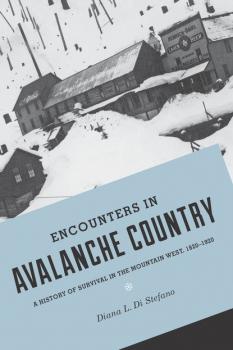ТОП просматриваемых книг сайта:
Emil and Kathleen Sick Book Series in Western History and Biography
Скачать книги из серии Emil and Kathleen Sick Book Series in Western History and BiographyGold Rush Manliness - Christopher Herbert
Emil and Kathleen Sick Book Series in Western History and BiographyАннотация
Информация о книге
Автор произведения Christopher Herbert
Серия Emil and Kathleen Sick Book Series in Western History and Biography
In Defense of Wyam - Katrine Barber
Emil and Kathleen Sick Book Series in Western History and BiographyАннотация
Информация о книге
Автор произведения Katrine Barber
Серия Emil and Kathleen Sick Book Series in Western History and Biography
Japanese Prostitutes in the North American West, 1887-1920 - Kazuhiro Oharazeki
Emil and Kathleen Sick Book Series in Western History and BiographyАннотация
Информация о книге
Автор произведения Kazuhiro Oharazeki
Серия Emil and Kathleen Sick Book Series in Western History and Biography
Radical Heritage - Carlos Arnaldo Schwantes
Emil and Kathleen Sick Book Series in Western History and BiographyАннотация
Информация о книге
Автор произведения Carlos Arnaldo Schwantes
Серия Emil and Kathleen Sick Book Series in Western History and Biography
Mills and Markets - Thomas R. Cox
Emil and Kathleen Sick Book Series in Western History and BiographyАннотация
Информация о книге
Автор произведения Thomas R. Cox
Серия Emil and Kathleen Sick Book Series in Western History and Biography
Reclaiming the Reservation - Alexandra Harmon
Emil and Kathleen Sick Book Series in Western History and BiographyАннотация
Информация о книге
Автор произведения Alexandra Harmon
Жанр Юриспруденция, право
Серия Emil and Kathleen Sick Book Series in Western History and Biography
Trout Culture - Jen Corrinne Brown
Emil and Kathleen Sick Book Series in Western History and BiographyАннотация
Информация о книге
Автор произведения Jen Corrinne Brown
Жанр Биология
Серия Emil and Kathleen Sick Book Series in Western History and Biography
The Rising Tide of Color - Группа авторов
Emil and Kathleen Sick Book Series in Western History and BiographyАннотация
Информация о книге
Автор произведения Группа авторов
Серия Emil and Kathleen Sick Book Series in Western History and Biography
Encounters in Avalanche Country - Diana L. Di Stefano
Emil and Kathleen Sick Book Series in Western History and BiographyАннотация
Информация о книге
Автор произведения Diana L. Di Stefano
Серия Emil and Kathleen Sick Book Series in Western History and Biography
The Nature of Borders - Lissa K. Wadewitz
Emil and Kathleen Sick Book Series in Western History and BiographyАннотация
Информация о книге
Автор произведения Lissa K. Wadewitz
Жанр Биология
Серия Emil and Kathleen Sick Book Series in Western History and Biography










